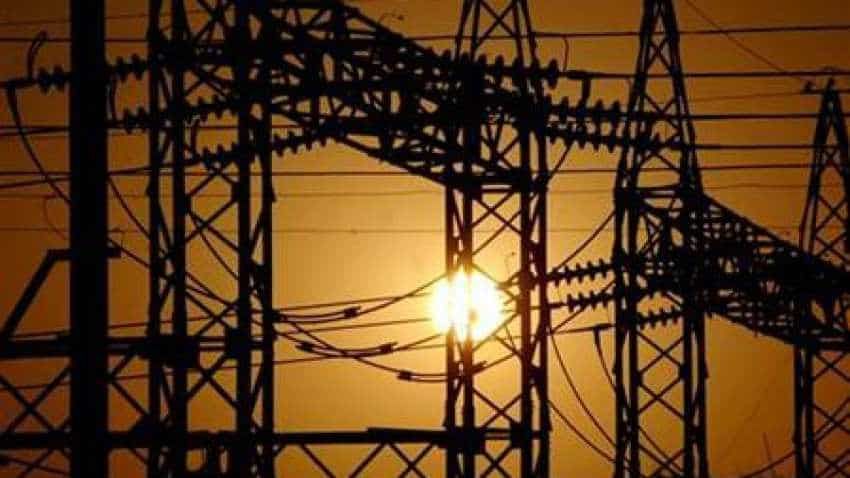India lost 4% of GDP from power distortions in 2016: World Bank
India lost a staggering $86.1 billion, equivalent to over 4 per cent of its GDP, owing to distortions in the power sector in 2016, says a World Bank report released on Wednesday.

India lost a staggering $86.1 billion, equivalent to over 4 per cent of its GDP, owing to distortions in the power sector in 2016, says a World Bank report released on Wednesday. The report tiltled `In the Dark: How much do power sector distortions cost South Asia?` prepared by World Bank Senior Economist Fan Zhang, also says that although India has achieved 100 per cent village elctrification earlier this year, 178 million Indians still remain unconnected to the grid as per figures for 2017.
"India achieved 100 per cent village electrification in 2018. But at the household level, its rural access rate, at 81 per cent in 2017, is still the third-lowest in South Asia," the report said. It estimates the downstream impact of power shortages on rural households and firms at 1.42 per cent of the Gross Domestic Product (GDP) per year and the second largest economic cost for the country.
It said the government should look to ensure steady power supply to households for its electrification programme to be truly successful. Although the power deficit in the country has been substantially reduced over the last few years, the reliability of electricity is still low compared with global standards.
Te 2018 Global Competitiveness Report ranks India 80th among 137 countries in the reliability of electricity supply.
Using nightly satellite images from India for 2013, the World Bank study found that areas adjacent to newly electrified villages subsequently experienced worse power outages. Among the major distortions in the sector, according to the report, is the lack of commercial mining in coal, a near monopoly on which is enjoyed by state-run Coal India, and which fuels over 70 per cent of the country`s power generation. It said the lack of competition has bred major inefficiency in India`s coal mining.
The cross-subsidisation of fares in the railways whereby freight costs in India are among the highest globally leads to transport bottlenecks affecting the power sector, the report said. Using microeconomic data from utilities, households and firms, the report quantifies the cost of each type of distortion in the power supply chain.
"The results show that the overall economic cost of distortions - ranging from 4 to 7 per cent of GDP - is far greater than previously thought on the basis of analysis considering only the fiscal implications of distortion," it added.
Get Latest Business News, Stock Market Updates and Videos; Check your tax outgo through Income Tax Calculator and save money through our Personal Finance coverage. Check Business Breaking News Live on Zee Business Twitter and Facebook. Subscribe on YouTube.
RECOMMENDED STORIES

Fundamental picks by brokerage: These 3 largecap, 2 midcap stocks can give up to 28% return - Check targets

SBI Senior Citizen Latest FD Rates: What senior citizens can get on Rs 7 lakh, Rs 14 lakh, and Rs 21 lakh investments in Amrit Vrishti, 1-, 3-, and 5-year fixed deposits

Tamil Nadu Weather Alert: Chennai may receive heavy rains; IMD issues yellow & orange alerts in these districts

SIP+SWP: Rs 10,000 monthly SIP for 20 years, Rs 25 lakh lump sum investment, then Rs 2.15 lakh monthly income for 25 years; see expert calculations

Top 7 Mutual Funds With Highest Returns in 10 Years: Rs 10 lakh investment in No 1 scheme has turned into Rs 79,46,160 in 10 years

SIP vs PPF: How much corpus you can build in 15 years by investing Rs 1.5 lakh per year? Understand through calculations

Retirement Planning: Investment Rs 20 lakh, retirement corpus goal Rs 3.40 crore; know how you can achieve it
10:48 AM IST










 SBI named Best Bank in India for 2024 by Global Finance Magazine
SBI named Best Bank in India for 2024 by Global Finance Magazine  Uzbekistan's economy grows by 6.6% in past 9 months
Uzbekistan's economy grows by 6.6% in past 9 months Nirmala Sitharaman to visit Mexico and US from October 17 to October 26
Nirmala Sitharaman to visit Mexico and US from October 17 to October 26  World Bank expects 5.1% growth for Nepal
World Bank expects 5.1% growth for Nepal ISA, MIGA set up multi-donor trust fund to support solar projects
ISA, MIGA set up multi-donor trust fund to support solar projects